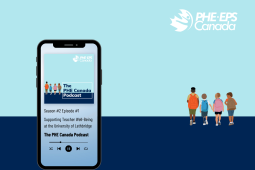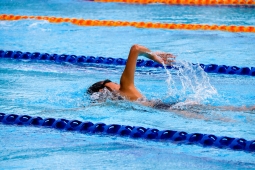Teachers' Tools for Mental Health

Previously published in Volume 82, Issue 3
Mental health disorders affect 15 to 20% of Canadian children and youth, and represent the most common health problem impacting this group (Kessler et al., 2005).
Children with mental health problems are absent 40 per cent more school days, and mental health problems are connected with underachievement (Santor et al. 2009). Other evidence suggests that academic performance in children is lower where higher levels of anxiety and depression are present (Owens, Stevenson, Hadwin & Norgate, 2012). With the reality that only 20% of Canadian children and youth who are identified with a mental health disorder receive a service connected to their distress within our current mental health care system (Waddell et al, 2005), schools are increasingly being identified as a place where children and families who are challenged with the burden of mental illness can be supported in their journey to receive professional care.
How equipped are schools and teachers?
No discussion of mental health in schools is complete, however, without including a focus on the wellness of teachers as they undertake the care of our children. It’s estimated that 50% of teachers will leave their profession within five years, citing stress, student behavior problems, or a combination of both (Ingersoll & Smith, 2003).
According to the Ontario College of Teachers’ 2006 survey, 13% of Ontario’s teachers reported ‘feeling stressed all the time,’ compared to only 7% of the work force in the general public (Jamieson, 2006). The College identified that stressful working conditions accounted for the second-highest reason for leaving the profession (McIntyre, 2006). This is important to all those involved. Gibson, Stephan, Brandt and Lever (2014) point out that when teachers leave, students lose not only a positive adult presence in their lives, but a weakened sense of school connectedness. Moreover, there is increasing evidence of a reciprocity effect: student levels of stress are directly related to teacher burnout, and student achievement decreases as teacher burnout increases (Oberle & Schoenert-Riechl, 2016; Arens & Morin, 2016).
Teachers identify mental health as a pressing concern in their schools. However, 87% of them note there is a lack of training and knowledge regarding how to support their students (CTF 2012). Teachers identify needing more education and support with respect to understanding their students’ mental health need as a key priority in their professional development (Rodger, Hibbert & Leschied, 2014).
There is a call to bring educators, mental health practitioners and researchers together to develop and share practical, evidence-based strategies to support child and youth mental health. This includes the longer-term requirement of developing connections and encouraging the building of personal resiliency and emotional wellness. These are crucial steps in designing learning spaces and places that promote safety and success for everyone. Learning together fosters knowledge, not only about the resources that are available, but also creates dialogue and ongoing networks of support with activities that consider the importance of mental health and help to reduce the associated stigma.
Web access to resources and tools
Teachresiliency.ca is a new website, developed by a partnership that includes PHE Canada (the funder), the Centre for Addiction and Mental Health, and a working group from the Faculty of Education at Western University. This project works from three guiding principles:
- In order to create mentally healthy and engaged classrooms for students, a teacher’s own mental health and well-being must be promoted.
- Teachers are acknowledged as professionals who can and do contribute to the learning of their colleagues in meaningful and effective ways.
- Teachers and schools need and are asking for access to information that can lead to improving their own mental health while creating healthy learning and working environments.
This groups is in the process of creating with and for teachers, a dynamic and flexible set of resources and tools to leverage their commitment and influence with their students and colleagues to better obtain and maintain positive mental health, resilience and overall well-being, for the benefit of both teachers and students.
The teachresiliency.ca website contains hundreds of resources easily located using the everyday language that describes the behaviours and emotions teachers see in their classrooms, staff rooms and mirrors. From quick, downloadable Tip Sheets, podcasts, videos, apps and tools, topics that are addressed include teaching for resilience or children who are anxious, self-care strategies to combat stress, to health and well-being. These materials have been created and selected for and by teachers, school administrators and mental health professionals.
Teachresiliency.ca is currently in a pilot-testing phase, with the final version ready for dissemination by early 2017. Included on the site will be: decision-making tools addressing how best to use the wide range of resources available; the latest in evidence-informed practice to support resiliency; strategies in creating mentally healthy learning and working environments; and resources that promote emotional wellness for teachers that are created by teachers and for teachers.









